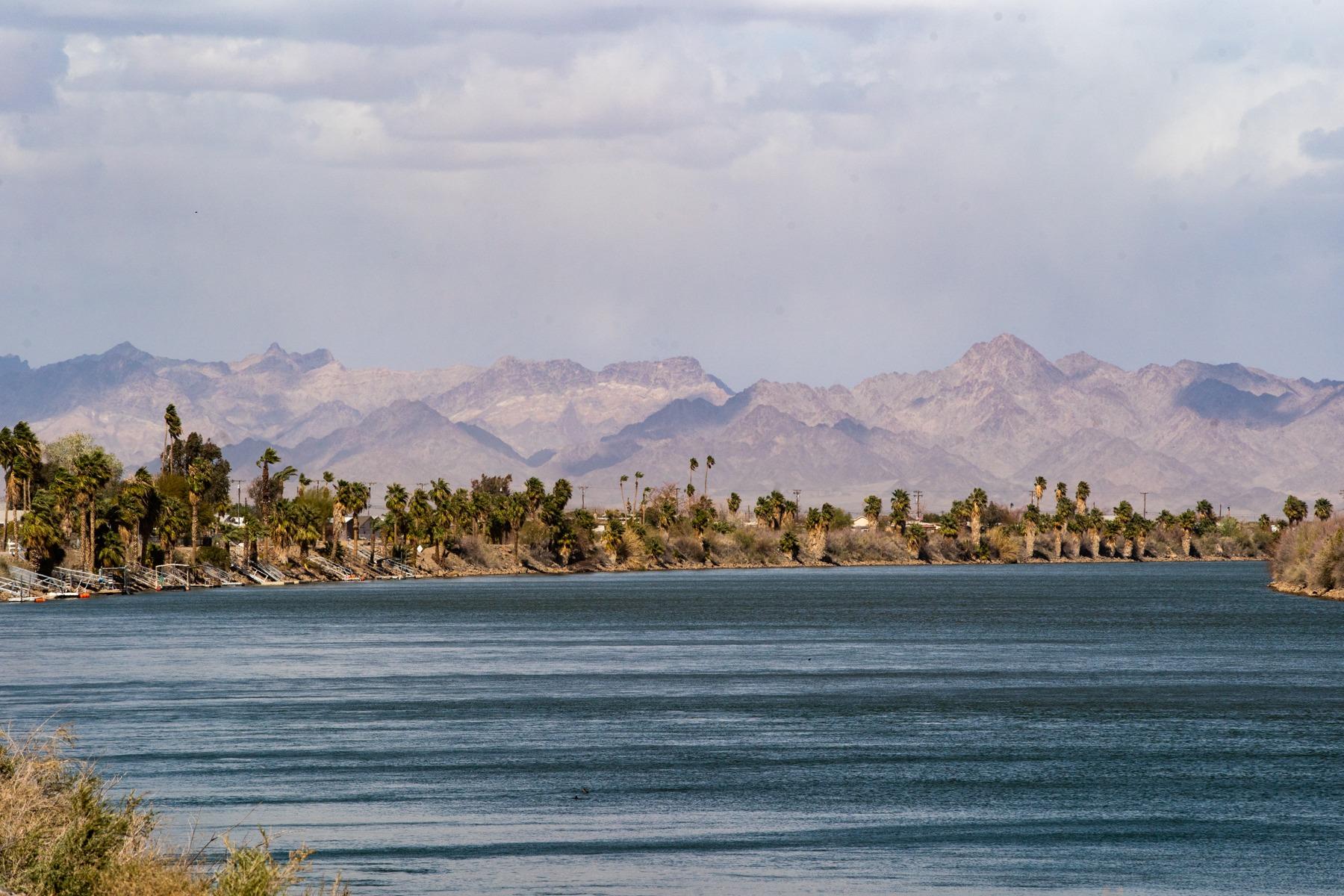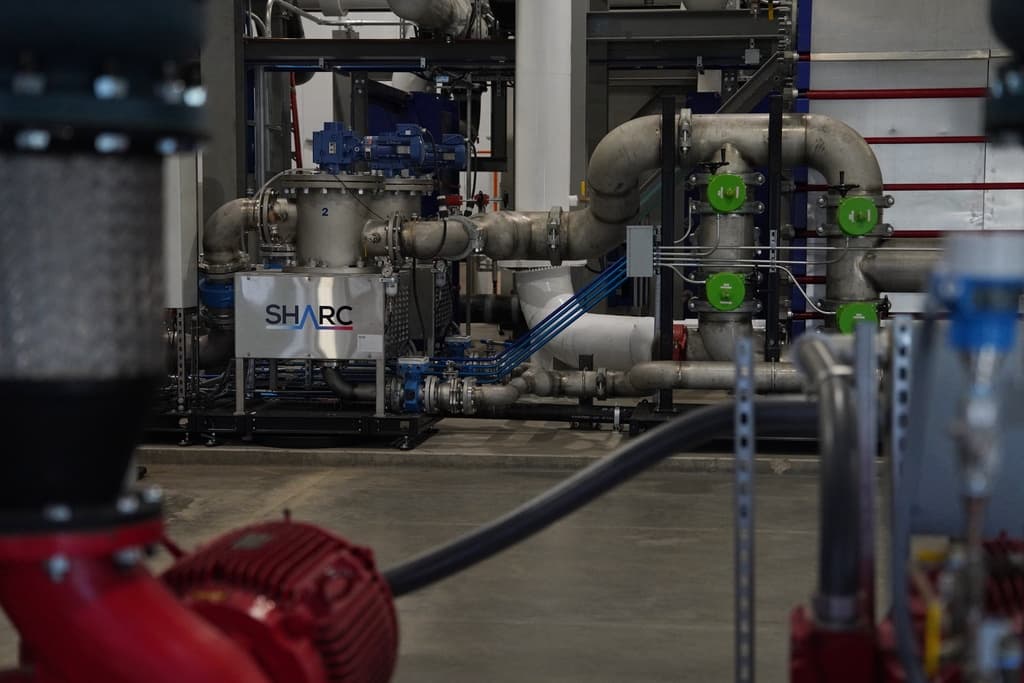
Negotiators from seven states must tell the federal government on Tuesday whether they’ve made progress on an agreement to divide up water from the Colorado River.
The river supplies drinking water for 40 million people, and an intricate series of dams, canals and reservoirs helps irrigate millions of acres of farmland. Hydropower made from the Hoover Dam can provide electricity for more than a million people.
But the river is under significant strain. Levels in Lake Powell and Lake Mead, the two largest reservoirs in the Colorado River Basin, are extremely low. Climate change is parching the basin; the river’s flow has declined by around 20 percent over the last century, even as the West’s population has exploded.
States signed the Colorado River compact in 1922 to stave off water conflicts. It created the Upper Basin states (Colorado, Utah, Wyoming and New Mexico) and the Lower Basin states (Arizona, Nevada, California). Subsequent agreements determined rules for how and when the river’s biggest reservoirs should release water.
But the current guidelines expire this year.
Tuesday’s deadline will determine whether states have agreed to new guidelines, even if they’re still sketching out the finer points … or whether the Trump administration needs to step in. Either scenario could have major implications for the West.
The core issue, according to Chris Winter, executive director of the Getches-Wilkinson Center at the CU Boulder Law School, is “who is gonna take the cuts?”
Here’s a guide to what’s at stake.
What do the states have to determine by Tuesday?
In 2007, the Bureau of Reclamation, which is part of the Interior Department and manages federal infrastructure on the river, set guidelines for how water should flow from major reservoirs on the river.
While those guidelines expire this year, they’ll continue to dictate how the reservoirs work until fall of 2026. By then, there needs to be a new agreement in place.
States must tell the federal government by Tuesday whether they’re on track to come up with their own, negotiated agreement for dividing up water between themselves after 2026.
If states come up with a plan, Winter said it’ll likely be the basis for how the river is managed. But if states cannot agree, then the Interior Department may make decisions for the states, which could be a painful process.
“We’ve known that this moment is coming for the last 20 years,” Winter said. “But the states haven’t been able to figure it out.”
What are the main sticking points between the Upper and Lower basin states?
Whole books and podcasts have been dedicated to this question! Without diving too deep, so to speak, there is just less water to go around.
The 1922 Colorado River Compact sets a firm amount of water that both the Upper Basin and the Lower Basin should receive. But the compact was negotiated in times of relative plenty; the last two decades have seen the West enter a period of drought not seen for more than a thousand years.
“There’s a lot less water than we thought there would be, and there’s a lot less water than what’s guaranteed to the basins under the 1922 compact,” Winter said.
The question then is, “which basin is going to take the cuts — in order to bring the amount of water we use into alignment with the amount of water that Mother Nature is supplying,” he added.
The Lower Basin has already proposed mandatory cuts to its water usage in the driest years, and would like the Upper Basin to do the same. States in the Upper Basin, on the other hand, argue that any cuts made should be voluntary, or come through conservation programs, like paying farmers to not irrigate some of their land.
That impasse is getting heated. Last week, Arizona governor Katie Hobbs called the negotiation positions of upstream states like Colorado’s “extreme,” and urged the Trump administration to step in.
What’s Colorado’s position?
Becky Mitchell is Colorado’s top Colorado River negotiator, and has said that the Upper Basin states already use less water than the Lower Basin. At a Colorado water conference a few weeks ago, she said the Lower Basin needs to cut back and start conserving water.
“We know that the Lower Basin’s drained all of the reservoirs and didn’t save,” she said. “They absolutely have to manage their uses just as we manage our uses.”
“That’s where the solution is … it’s clear, and I think the world will see it at some point,” she added.
What happens if the federal government takes control?
The federal government has plenty of authority to order water cuts, especially during extreme shortages.
Major water users rely on the Interior Department to send water coursing through canals like the Central Arizona Project, or the Colorado River Aqueduct, which stretches into Southern California, to supply their water.
Lake Powell and Lake Mead also store millions of gallons of water. But those reservoirs cannot generate hydropower from their dams if the water level gets too low — a situation known as “dead pool.”
To avoid that, the DOI can sharply cut how much water major users get. Essentially, they can shut off the tap.
“That is really a significant lever that the Secretary of the Interior can wield in the Lower Basin,” Winter said.
The DOI has less leverage in the Upper Basin, because the federally-managed reservoirs are smaller in those states. But they could drain the Blue Mesa Reservoir in Colorado, for instance, to send water downstream, which could devastate the recreation-based economy in the area.
Could a dispute go to the Supreme Court?
Yes. The 1922 compact has a clause that lays out how much water needs to flow at Lee’s Ferry — the official point that divides the Upper Basin from the Lower Basin.
The Lower Basin could enforce that flow, and order that the Upper Basin states cut back on their water usage to deliver enough water downstream. That’s never happened before, though, and could trigger a messy, protracted legal battle that heads to the Supreme Court.
What could a potential agreement look like?
Compromise is key, according to Winter. He said it’s likely that both basins will have to agree to some level of cuts to account for a climate-changed world.
One incentive to come to an agreement is certainty for farmers, cities, and irrigation districts that rely on Colorado River water. An agreement would allow them to plan for future usage, and know how future droughts will affect their supplies.
“If a negotiated solution involves some amount of pain for everybody, but a lot more certainty, then I think that provides potentially the win-win,” Winter said.
“But it’s going to take a lot of work,” he said.








